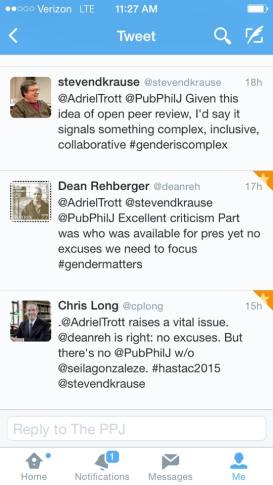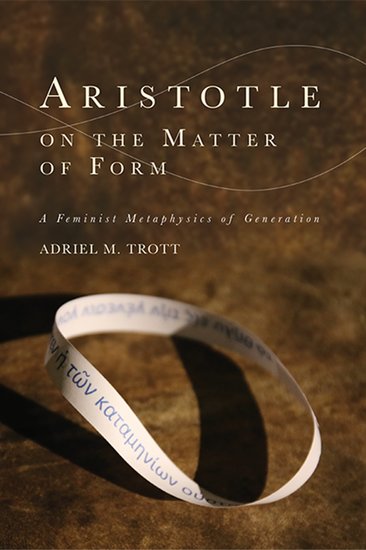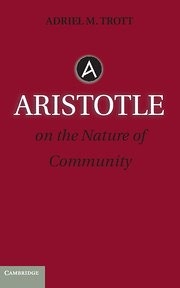#HASTAC2015

I just spent three days at Humanities, Arts Sciences and Technology Alliance and Colaboratory (HASTAC) 2015 conference on the theme: “Art and Science of Digital Humanities.” I did some livetweeting, which I’ve been doing regularly at conferences but mostly I took notes directly to this post which I then edited to summarize my observations on recurring and important themes from the conference.
Observations
- This might say more about the kinds of conferences I attend, but this is the most diverse conference community I’ve ever seen.
- Perhaps not surprisingly for a digital humanities project, it’s also the youngest conference crowd I’ve ever seen. There are many more people in literature and languages using digital humanities in their pedagogy and research than any other field.
- I participated in recurring discussions of importance and difficulty of interdisciplinarity. Why do we hyperspecialize? Why do we entrench? Funding structures and disputes over resources seem to drive divisions that don’t necessarily serve our ends in digital humanities.
- A woman whose native tongue was not English kept referring to digital humanity in a panel on using digital resources in medieval studies, which got me thinking is our humanity digital?
- I had several discussions about ambiguity. Ambiguity is at the heart of humanities. Does technology excise the ambiguity in a way that is problematic or can it give students more opportunities to struggle with readings and making their own case for how to read or understand a text?
Keynotes
The organizers made a point of inviting young and innovative scholars to give keynotes. The Thursday afternoon keynote was an amazing presentation by two artists about how they used technology to engage communities in their public art projects, which you can read more about at their website. The Thursday morning keynote, “Connecting the Dots,” was given by Scott B. Weingart, Digital Humanities Specialist at Carnegie Mellon University. A historian of science, Weingart charts the shift from knowledge as a tree to knowledge as hub and spokes. In Enlightenment, knowledge is active, open, non-transcendent no longer unified in God – but still in a tree, knowledge and disciplines still have their proper place. Hub and spokes are more ground up, but digital humanities as an interdisciplinary project fosters a different sense of knowledge, which is sometimes why it falls out of established forms of knowledge. Weingart argues that we need better metaphors (spatial, visual and otherwise) for knowledge that is ground up, diverse, distant nodes in the network can profoundly effect the whole. Designing the community we want to live in by reimagining how knowledge looks. (See these images for knowledge that Scott curated.)
Roopika Risam, a professor of world literatures and English education at Salem State University, gave the Friday afternoon keynote entitled “Across Two (Imperial) Cultures.” She analogized between Kipling’s famous line: “East and East and West is West and never the two shall meet,” and the relation between science and humanities. Just as it is in fact the case that East and West do meet in his poem, but in fraught ways marked by colonialism, so do science and the humanities — not just in the sense that science colonizes the humanities but colonization affects how science and the humanities converge in digital humanities both in the US and Canada and the global South.
Kudos to the conference organizers for identifying and inviting dynamic artists and junior scholars for the keynotes. This is a great model for other fields.
Digital Humanities and Pedagogy
I’ll admit: I’m regularly suspicious about whether virtual tools will help or distract students. I don’t think strategies are good or better just because they are digital. Tools are tools. One can use word clouds to show students what words show up repeatedly in a novel or an essay. Use social media relations maps to address the relations of characters in Greek tragedy (Oedipus gives a whole new meaning to “It’s Complicated” relationship status in Facebook). But do you need those technologies to make those points? We learn from digital technologies something about technology as such: using it to manage the world, can be used for good or ill. I keep asking myself whether we become these kinds of pedagogues who see every pedagogical occasion as an opportunity to use digital technology rather than to teach and to encourage learning?
One of the most helpful panels I attended was the lunch discussion that focused on digital humanities for underprepared students (i.e., all entering college students after No Child Left Behind). I think what I liked most about it was it was more about pedagogy than digital humanities for digital humanities’ sake. Three history faculty from Methodist University led the discussion. Patrick O’Neil explained how he stopped using a textbook and sets his students loose on the internet to find primary sources. He spends the class period having students analyze these sources and provide arguments for their views of what the sources mean and what they tell us about different periods in American history while he takes notes on a laptop hooked up to the projector.
This approach gave me some ideas for how to teach my Ancient Philosophy course. I’ve already planned to introduce more secondary literature as ways of showing students that what we are doing is making arguments about what ancient philosophical texts mean. I would like to give more assignments and do more work to foster that conversation rather than to present my view of what they mean.
Diversity and Digital Humanities
Several days attending panels about digital humanities, who it serves and benefits and who does the work, has given me a new insight into Audre Lorde’s claim that you cannot dismantle the master’s house using the master’s tools: if the tools are products of sexist and racist culture, they will reflect and reproduce that culture. Digital humanities is a prime example of this problem. Nonetheless, I was impressed with the ways that women of color in particular are using these tools to further their feminist, decolonial and anti-racist projects.
A common theme was the way that women of color engage these tools differently. One example is how Lehua Ledbetter, professor at University of Rhode Island, used social media technologies to update ways of bringing feminism to the community in the vein of bell hooks in Feminism is For Everybody. hook maintains that women of color communicate outside the mainstream. Ledbetter was concerned that hooks’ examples were outdated so she and her students considered how women of color use digital technology in a way that is outside the mainstream. Ledbetter had students read Michael Warner’s Publics and Counterpublics to rethink what community is with hooks and to pursue projects that use digital technologies to take feminism to the community.
Many presenters discussed the resistance they encountered as women of color in using digital technologies. Annemarie Perez had her Chicana feminism students blog, a transgressive practice that provoked white supremacists to stalk and troll her students which eventually prompted Perez to strip the blog of identifying markers of her students and close it to comments. Dhanashree Thorat developed a September 11 Digital Archive that captured marginalized voices and subject positions as a counternarrative to official narratives and archives. Ricardo Ramirez discussed abjection in Kristeva and gamer theory.
I was impressed that there were so many panels addressing these concerns at #HASTAC2015, but still there were diversity problems. One panel at which the diversity problems were obtrusive was the Public Philosophy Journal panel. I’ve addressed this on this blog before on a post that was cross-posted at PPJ, so I was frustrated to see that this problem is still not being addressed. Four white men discussed the Public Philosophy Journal’s efforts to create an open peer review online journal, which prompted some questions: Who is this for? When I raised these concerns livetweeting at the panel, I received this feedback:

 As you can see, the PPJ project leaders responded positively, recognizing that there is a problem and pointing to the work of the project director who is a woman. I am glad that women are involved, but it remains the case that no women philosophers or philosophers of color are involved in the leadership of the project. If this situation continues, it seems that the PPJ will reproduce the field as it currently is.
As you can see, the PPJ project leaders responded positively, recognizing that there is a problem and pointing to the work of the project director who is a woman. I am glad that women are involved, but it remains the case that no women philosophers or philosophers of color are involved in the leadership of the project. If this situation continues, it seems that the PPJ will reproduce the field as it currently is.
Some pedagogical ideas I left with
- I spend a lot of time trying to encourage my students to learn how to read the text that I present to them itself, rather than running off to some internet site and relying on that site to tell them what the text means. Unfortunately, they often don’t understand what that site says either. And they certainly don’t learn how to make meaning out of the text in front of them.
- I’d like to give writing assignments on the first day of each text that ask students to do four things: 1) Explain in their own words what the text says, 2) Articulate what they think the author is claiming about the world by saying that, 3) draw the lines from 1 to 2 — articulate what things about 1 lead them to conclude 2 and 4) what might be an alternative reading, perhaps their initial reading, and why do you want to reject that reading in favor of the one that you are offering? After this assignment with the first text, students could also be asked to consider how the text they are reading might be understood to respond to the text that we have just read (say, the pre-Socratics to Hesiod).
- Then I am going to have them read a secondary source and write up an account of what the secondary source author thinks the primary text means and how they draw that conclusion from what it says. I’ve decided that one text I will use to do that is an article from the Stanford Encyclopedia for Philosophy. First, it will expose them to better online resources than Wikipedia. Second, it will show them that even internet sources need to be read and evaluated — that the internet is written by someone who is making a case about what the text that they are reading in class means (which is also why they can’t just steal it and say it’s theirs!).
- I also want to do more to teach students how to use the online classical text tool Perseus.
- Finally, I was glad to have some time to talk to Chris Long who’s in the middle of moving to Michigan State to be the new Dean of Arts and Letters. He wrote a book that he set up to permit digital dialogical interaction. I am going to have students read a chapter of his book and comment within the chapter on the argument–whether they find it convincing or not based on their reading of the text and why. Then we will have a skype session with Chris after he has had a chance to read the comments, approve them if they are reasonable engagements and to respond.
I think a conference that leaves me with three solid ideas for pedagogical engagement is a great conference. Fortunately, I got much more than that out of #HASTAC2015.






Trackbacks & Pingbacks